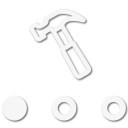
Builder I
Is there a formula to find the proper tire pressure for aftermarket tires? Over the years, I've been given different advice.
For example, I owned a '95 Chevy with 35-inch Mud Terrains years ago. One tire shop advised me to maintain the factory pressure listed on the door, even with aftermarket tires. This seemed off, as it was a larger tire than stock, so it would imply that the pressure should be adjusted. Another tire shop recommended that I inflate the tires to the max cold pressure listed by the tire manufacturer since I should follow the guidance of the aftermarket tire manufacturer over the vehicle recommendations.
Years later, I've learned that neither is sound advice when dealing with aftermarket tires. Doing searches on the forum, many people discuss how much to deflate on the trail for different terrain, but what is the proper tire pressure for the road when you go from a 265 to a 285 or 305 tire size?
I understand it is based on the tire load (vehicle weight + cargo) but is there a formula to find the proper tire pressure for aftermarket tires?
For example, I owned a '95 Chevy with 35-inch Mud Terrains years ago. One tire shop advised me to maintain the factory pressure listed on the door, even with aftermarket tires. This seemed off, as it was a larger tire than stock, so it would imply that the pressure should be adjusted. Another tire shop recommended that I inflate the tires to the max cold pressure listed by the tire manufacturer since I should follow the guidance of the aftermarket tire manufacturer over the vehicle recommendations.
Years later, I've learned that neither is sound advice when dealing with aftermarket tires. Doing searches on the forum, many people discuss how much to deflate on the trail for different terrain, but what is the proper tire pressure for the road when you go from a 265 to a 285 or 305 tire size?
I understand it is based on the tire load (vehicle weight + cargo) but is there a formula to find the proper tire pressure for aftermarket tires?






